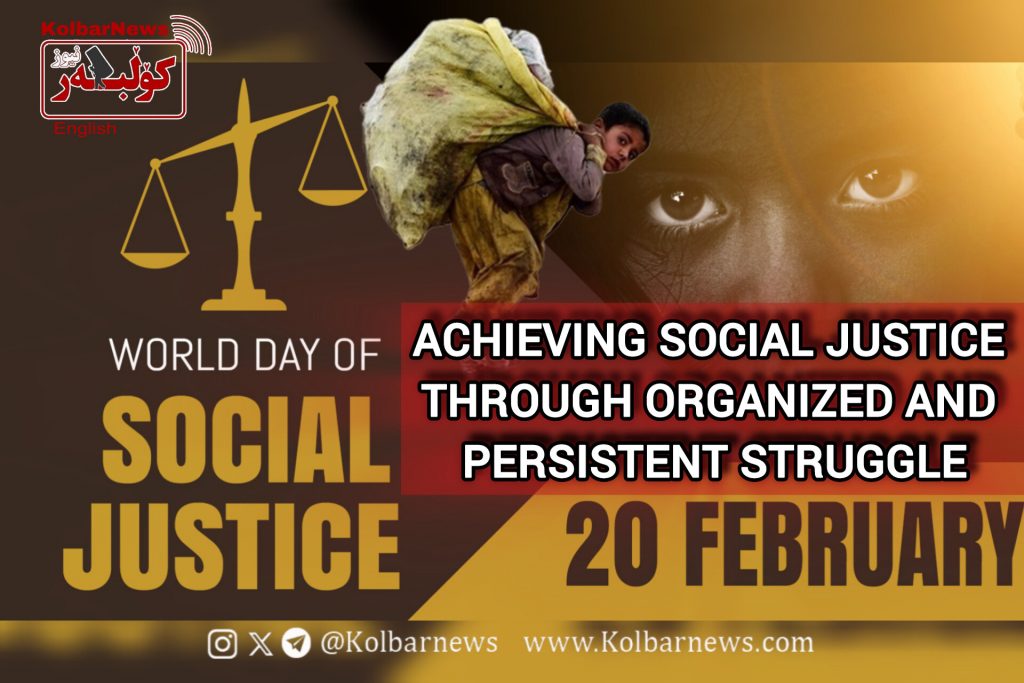
Tomorrow, Thursday, February 20, 2025, marks the United Nations’ World Day of Social Justice. The central theme for this year’s events is “Strengthening Justice for a Stable Future”. According to the UN, this slogan represents a vision for an economy driven by low-carbon production, especially benefiting vulnerable populations. The organization emphasizes that achieving this goal requires linking environmental sustainability with social justice. Social justice, as defined by the UN, entails creating jobs, retraining and upskilling workers, and ensuring strong social protections to meet the needs of workers, marginalized communities, and indigenous peoples.
However, a simple look at today’s capitalist societies reveals that such expectations will not be met. After World War II, capitalists who had amassed enormous profits by exploiting workers in subordinate economies and plundering raw materials—were forced to accept labor movements’ demands, leading to the establishment of welfare states in some Western countries. These welfare systems improved workers’ living conditions to some extent. However, as soon as the profit-driven capitalist system realized that workers’ expectations were rising, it resorted to neoliberal economic policies and attacks on labor unions to roll back the hard-won gains of the welfare state. Meanwhile, capitalism true to its nature has led to massive overproduction, often of unnecessary goods, pushing the environment toward destruction. Today, far-right extremists and neo-fascists, like Trump and his followers, are eliminating restrictions on coal, oil, and gas production, accelerating global warming and the destruction of the planet.
In developing countries like Iran, where the Islamic Republic rules, there is no trace of social justice. The conditions for the majority of citizens are unbearable, if not catastrophic. The Islamic regime rose to power claiming to bring justice but instead turned Iran into a living nightmare. Its leaders and their superstitious propagandists still shamelessly claim to uphold justice, but the reality experienced by most Iranians tells a different story.
Iran, despite being among the world’s top ten richest countries in natural resources, has been reduced by the regime to a state where, according to estimates, 70% of its population lives below the poverty line, with at least 30% experiencing absolute poverty, struggling to secure even basic survival needs. Meanwhile, a small elite controlling the government and its mafia-style economy lives in unimaginable luxury what Karl Marx might describe as “garnishing their salads with diamonds.” Among those suffering the most from this crushing poverty are women, especially single mothers, who face even harsher conditions. The number of child laborers, homeless children, and beggars has become so overwhelming that many people prefer not to leave their homes unless absolutely necessary, or even avoid traveling to Iran altogether to escape the horrifying sight of such suffering.
The greed of Iranian capitalists and regime officials extends beyond just exploiting workers. As the government prepares to set the minimum wage, officials and state-backed economists are pushing for an amount that is four to five times below the poverty line, just as in previous years. Some of the regime’s so-called theorists argue that worsening economic conditions are a necessary prelude to the arrival of their mythical “Imam of the Age”. This is just one example of how social justice is manipulated under the Islamic system, which uses religious rhetoric to justify oppression. In addition to denying workers fair wages, the regime and its capitalist allies are destroying the environment with unregulated industrial exploitation, leaving no room even for their own imaginary savior to appear.
However, all signs indicate that sooner or later, the freedom-loving, socialist, and revolutionary activists of the “Women, Life, Freedom” movement will bury this exploitative regime and its brutal dictatorship. They will fulfill the dreams of the thousands who have perished fighting for social justice, democracy, and workers’ rights.
The vision of social justice championed by these revolutionaries has clear principles and will be realized through a process of struggle. In this process, those who create the nation’s wealth workers who sustain life through their labor and nature’s resources must take control of their own destiny. They will establish a government based on social control and councils, ensuring democracy, freedom, and universal welfare.
In such a society free from exploitation, oppression, and dictatorship complete equality will be achieved, making real social justice a reality. Implementing such a system in Iran is possible.
As for its preservation and expansion, it will depend on both internal efforts and solidarity with revolutionary and justice-seeking workers abroad. Through this combination of domestic and international resistance, the future of social justice can be secured.

